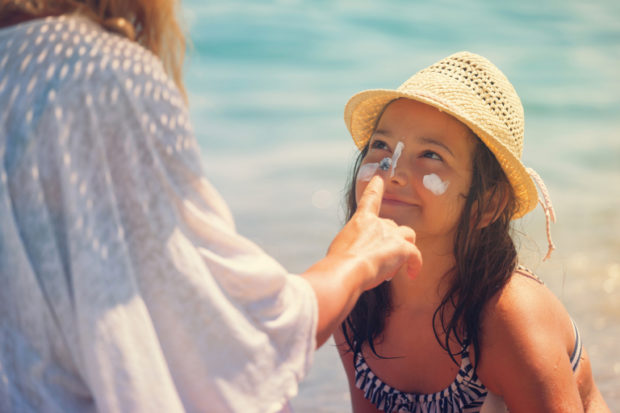
Scientists at Liverpool University in the United Kingdom have warned of the dangers of sun exposure to the skin. They highlight a particularly sensitive area of the face that is all too often forgotten when applying sunscreen.
While spring is just beginning to show its face in the northern hemisphere, it can be tempting to fly somewhere sunny to bask in the heat. But the dangers linked to sun exposure should not be taken lightly.
Even if you are not planning to leave the sunscreen behind, you might not be applying it properly to achieve full coverage, according to the Liverpool scientists whose work has been published in the PLOS One journal.
Researchers observed how people applied sun protection products. They asked 84 students at Liverpool University to apply sunscreen and a moisturizing cream with sun protection factor (SPF) to their faces on two separate occasions. The volunteers were then exposed to ultraviolet (UV) rays and photographer using a UV-sensitive camera.
On average, 11% of the entire face was not covered by sunscreen, compared to 17% when applying moisturizer, the study reveals. The area around the eyelids was most often forgotten. The authors of the study warn that the face — particularly the area around the eyelids — has a higher risk of skin cancer.
“Particular attention should be paid to the eyelid area when applying any SPF cream,” explained Austin McCormick, consultant ophthalmologist and oculoplastic surgeon and co-author of the study. “Alternative methods of protecting the eyelids should be considered such as UV filter sunglasses.”
While exposure to the sun is an excellent source for vitamin D, the researchers noted that most people spend long periods in the sun after using moisturizing creams which include sun protection. When they do it without completely covering their faces, this increases the risks.
The authors note that the results confirm those of previous studies and highlight the need to raise public awareness of vulnerable areas and sun protection strategies. CE/JB
RELATED STORIES:
Why you should wear sunscreen even when you’re just in the car













































